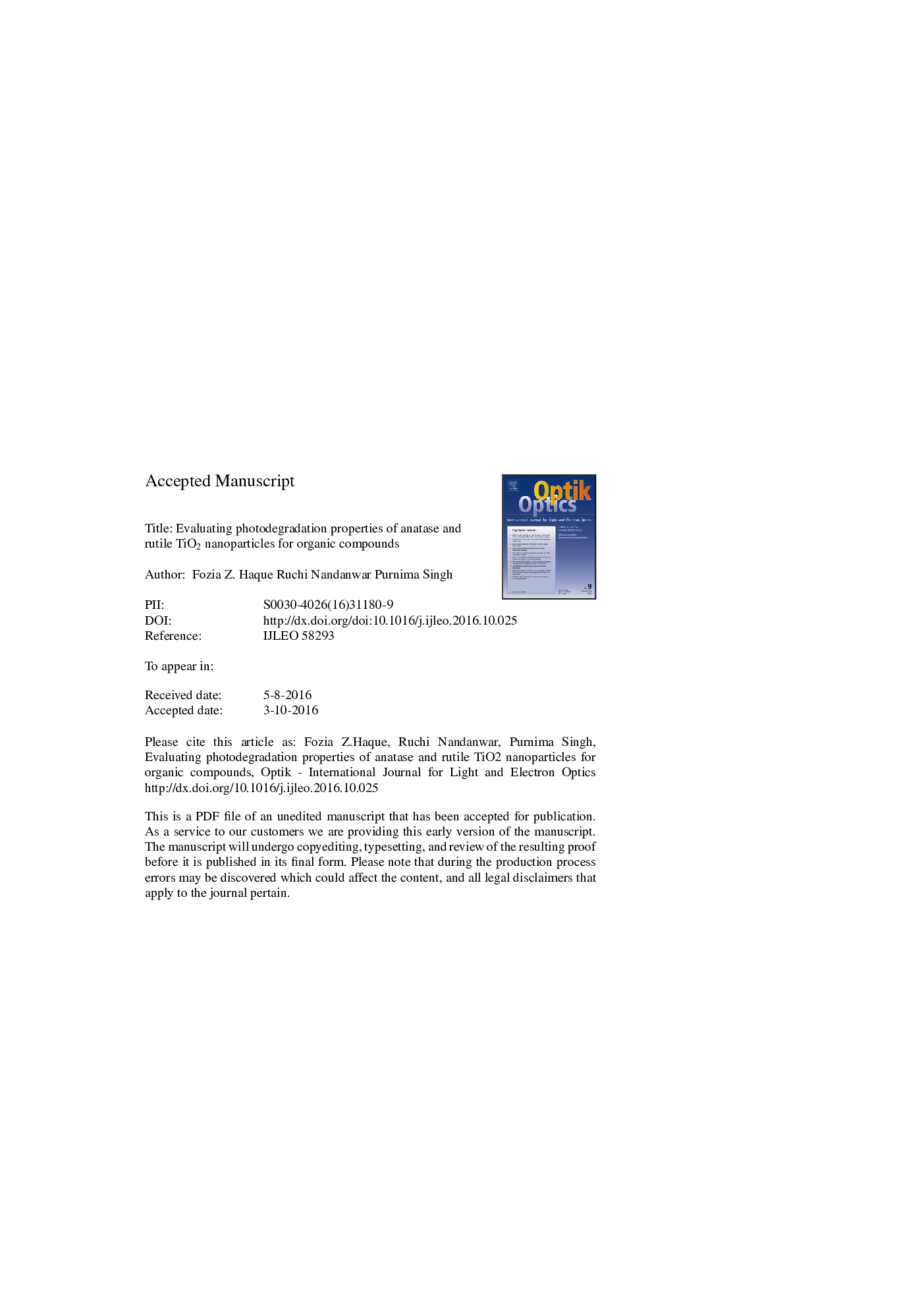| Article ID | Journal | Published Year | Pages | File Type |
|---|---|---|---|---|
| 5026282 | Optik - International Journal for Light and Electron Optics | 2017 | 19 Pages |
Abstract
TiO2 nanoparticles were synthesized via a simple sol-gel method and calcined at 300 °C, 500 °C and 800 °C temperatures. SEM images show well-defined particles which get agglomerated at higher calcination temperatures. Two types of nanostructures, spherical and rice-grain shape are significantly observed through TEM. The spherical nanostructures is estimated the particle size to be 73.99 nm with the larger BET surface area of 205 m2/gm in all the three samples. The rice-grain shape particles are confined to 12-13 nm only in samples calcined at 300 °C. The XRD investigations of these TiO2 nanoparticles confirm the tetragonal form of anatase and rutile phases of TiO2. These results suggest that, TiO2 sample calcinated at 300 °C temperature showed anatase phase of good crystallinity with smaller crystallite size. FTIR spectra showed the TiO2 peaks in characteristics region are due to TiOTi metal bond in all the samples. The morphology display in the AFM image of powder sample exhibit well structured nano-surface. UV-vis spectra show stronger absorption in the visible region. The emission spectra of anatase TiO2 nanoparticle of sample calcinated at 300 °C temperature has been split into sharp peaks confirming well-defined lattices site in particles and better luminescence activity of material. The sharp emission peak is due to reduced recombination rate which enhances photocatalytic properties. The active anatase Titania calcined at 300 °C temperature show remarkably high rate of photocatalytic of methylene blue (73%) and methyl orange (69%) under visible light irradiation.
Keywords
Related Topics
Physical Sciences and Engineering
Engineering
Engineering (General)
Authors
Fozia Z. Haque, Ruchi Nandanwar, Purnima Singh,
